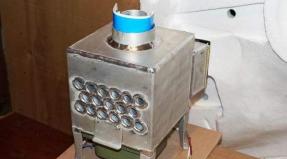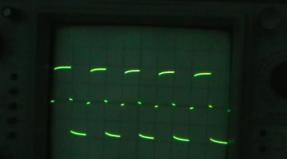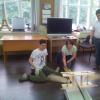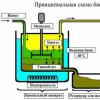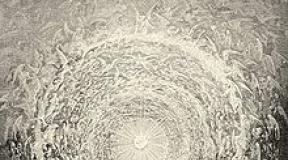What is abscess. Causes and symptoms of abscess. Here is an exemplary algorithm for the development of land
Abscess is a pathology of an inflammatory character, which is characterized by the formation of cavity filled with purulent contents, in the affected place of fabric or organ. Anomalous zone is surrounded by dense walls, therefore, in contrast to many other similar diseases, with this disease, exudate does not go beyond the seat covered.
What is it - abscess, how dangerous is he dangerous and how to treat him? Answers to these questions should be well known to every person.
General
Under this concept, the purulent inflammation of the tissues with a clearly defined decay focus is implied. The abscess of soft tissues is usually provoked by streptococcus or staphylococcus. In this disease, the inflammatory focus is clearly limited to prolonged organs. A pathological process is emerging as minor redness, which over time is compacted. At the final stage, the affectionant becomes soft, filled inside in the pus.
What is the contents of such an cavity? In reality, the pus is a combination of proteins, leukocytes, other cells whose task is to limit pathogenic microflora. Abscess is a disease that is equally subject to both men and women.
Features
An ulcer is developing in the case of inflammation of the fiber or skin after penetrating pathogenic bacteria through damage to the epithelium. Absuscess arises against the background of acute or chronic infection. Most often, uluses appear in men in the perimetal zone, in the neck, limbs and heads. And in women such neoplasms are usually localized in the axillary depressions, as well as the peripheral and vulvologeal places. But, as is well known, the abscess can cover not only the outer layers of the skin, but also internal organs, as well as the brain.
How does it appear?
Usually an abscess is emerging against the background of penetration into the body of various infections. In the area that the pathogenic bacteria filled (burn, zanoz, wound, the cut) is beginning ordinary inflammation. This is an absolutely normal reaction of the body aimed at protection, and it is necessary for the extermination of alien microorganisms.
Symptoms of ordinary inflammation are considered:
However, the normal process can gain a difficult form and become pathological - it is at that moment an abscess appears.
Development mechanism
All described simple inflammation symptoms testify to the active struggle of the body with an infection that penetrates the open wound. During this "collision" of useful and pathogenic bacteria, purulent content is formed. It consists of dead immunity cells, particles of injured fabric and still alive microbes.
The more microorganisms in the resulting wound, the stronger the body will resist them and the more purulent content accumulates in the damage zone. If the inflammation is too strong, then the likelihood appears that, together with the liquid, the bacteria is distributed throughout the body. And so that this does not happen, in the body works peculiar protective organism: Near the affected place, a rather dense capsule is formed - it is abscess.
The reasons
There are several prerequisites for reincarnation. easy inflammation In a more severe disease - abscess. Most often, such a consequence is emerging against the background of the effects of several types of pathogenic microorganisms, but the process is also aseptic, that is, non-infectious nature.
In general, several reasons for the development of abscess are known:

The main causative agents of infectious assets are global microorganisms - streptococci and staphylococci. Penetrating into the body, they provoke the appearance of a rapid inflammatory response. Often, even an intestinal wand is joined. Many species of these microbes constantly and quite peacefully live on the surface of the skin, but completely unacceptable in an internal sterile environment. Abscess can also provoke other microorganisms - for example, tuberculosis bacteria or clostridium, but such a phenomenon is observed extremely rarely.
Among other things, there is another type of abscess - cold. His difference lies in the pronounced clinical picture of inflammation, and the reason for its appearance is the bone-articular form of tuberculosis.
Varieties
Abscess (on the ICD-10 code L02) may occur in absolutely any soft tissues. Taking into account the one exactly formed an uknechnik, there are several varieties of pathology:
- Abscess muscles or subcutaneous fatty fiber. This is the most common variety of pathology. The prerequisite for its development is almost always a slight skin injury.
- Paratonic type. Food is formed in the tissues surrounding the sky almond and usually turns out to be the consequence of purulent anchina.
- Pilot view.
- Liver abscess. Serious complication of acute infectious pathologies abdominal cavity.
- Purulent process in light. Often becomes the consequence of pneumonia or penetration of alien items in bronchi.
- Abscess brain. One of the most severe varieties of the disease, the forecast with it is usually unfavorable.
- Purulent processes in the organs of a small pelvis. Often, this is the consequence of chronic infections of women's reproductive organs.
- Abscess intestinal loops.
- Pathology of Appendix. Appendice appears as complication of simple appendicitis.
- Abscess lung.
The classification of acute and chronic type of pathology also provides peripheral and central types of process. In addition, glands are multiple and isolated, depending on the number of infectious foci.
In fact, this list is far from complete and shows only the most common types of disease.
Clinical picture
Regardless of the localization of the abscess, as a rule, the affected complains of:
- migraine;
- severe weakness;
- increased temperature bodies;
- growing pain in damaged zones.
The region of the gland itself brings discomfort because of the passage in it is stormy inflammatory process. But the general malaise is the result of intoxication - poisoning the body of patients with products of the life of pathogenic microorganisms.

Local symptoms
The remaining signs of pathology are due to the localization of the ulotnik.

Being in internal organsThe purulent process causes signs that often imitate other diseases. However, a qualified doctor will be able to easily identify this pathology. After all, it is not difficult to put an accurate diagnosis in its bright symptoms.
However, sometimes on the started stages in secondary infection, it is quite difficult to find the initial focus of the pathological process. For this, the patient takes additional tests: the general study of urine and blood, as well as the imprint of the most affectionate.
The diagnosis is carried out on the basis of patient complaints, laboratory surveys, as well as ultrasound and X-ray testing. With the kidney and liver abscess, the puncture of the organ is often produced. As a rule, all this information allows you to accurately determine the disease and take up timely treatment.

If the abscess covers the upper layers of the skin, it will be able to easily detect any specialist during the examination of the patient.
Therapy
Despite the seriousness of the disease, modern medicine is able to cope with its treatment with success:

Probable complications of abscess
If you do not do the treatment of an ulcer, then over time, its capsule will soften and the contents will break out. That is why the consequences of pathology may be pretty heavy.

Even the most harmless, at first glance, an affection can break through, for example, in the bloodstream, thus causing blood infection. So it is not necessary to ignore signs of inflammation.
Abscess (disappearance) is the local Muka cluster, which appears due to acute or chronic local infection, due to which the destruction of tissues begins in the focus. Abscess develops with inflammation of the skin or tissue under it after penetrating the microbes through the abrasions, injections, wounds.
A characteristic feature of the abscess is that the tissues adjacent to the focus of inflammation create a kind of wall-membrane, separating the infected area and the boundary process and the fission of tissues, which is a protective reaction of the body.
Many types of abscesses are distinguished: soft tissues, paratrovillar, pulmonary, post-thexal and even abscess of the brain. But, regardless of their location, abscesses are always accompanied by pain syndrome and bring a lot of inconvenience.
Causes of abscess
Most often abscess occurs due to focal bacterial infection, mostly staphylococcal, as it leads to the weakening of immunity and reduces the body's ability to fight diseases.
There are many ways to hit microbes into the body and pathways of abscesses: microscopic damage to the skin, the suppuration of the accumulation of the washing blood (hematoma), the distribution of infection from the local focus, and the furunculae, purulent infections and much more.
It is possible to occur as an abscess due to the field of chemicals, as well as after medical manipulations (subcutaneous injections, injections) made without compliance with the aseptic rules.
Symptoms of abscess
There is the possibility of abscess both on the skin and on any organ or in tissues. The most difficult to diagnose the abscesses of the internal organs, and the abscesses visible outside are located in the dermis, in the muscles or in the tissue under the skin.
The first sign of the occurrence of abscess is the appearance of a painful solid node and redness around it. After a few days or weeks, a capsule filled with pus is formed in this place.
The symptoms of the abscess coincide with typical manifestations of purulent-inflammatory processes, regardless of their location. As a rule, it is total weakness, indisposition, high body temperature (especially difficult cases up to 41 °).
The final phase of the abscess formation is often its spontaneous break, leading to the output of the pus. With surface abscesses, the pus comes out to the external environment and in the case of complete cleansing, the blast loses the volume, falls out and, in the absence of negative influences, over time turns into.
With the abscesses of the internal organs, the depth of the pus in the cavity of the body can lead to the development of various purulent processes.
Areas where abscess may appear
Healing procedures:
Treatment of abscess

For successful treatment of abscess, its diagnosis on early stages. The treatment of abscess, regardless of its occurrence, is reduced to.
Most often abscess is the cause for operational intervention and hospitalization, but with small surface inflammation, their treatment is possible in outpatient conditions.
In the abscesses of the internal organs (liver or lung), sometimes they make puncture to remove the pus and antibiotics are introduced into the liberated cavity.
The extreme stage of operational intervention in chronic abscesses is the rescue of the organ along with the abscess.
After opening the abscess treat the same as purulent wounds. The patient provides peace, full nutrition, possibly the purpose of transfusion of blood preparations, or its substitutes. The course of antibiotics is assigned only with regard to the sensitivity of microflora to them. Especially attentive in the treatment of abscesses should be people suffering, since they need a complete correction of metabolism.
With timely treatment of abscesses and properly performed operational intervention, the percentage of complications is minimal. But the launched, unfamiliated abscess can go into chronic form or lead to the spread of infection to healthy fabrics. On the spot of poorly purified abscess may form a fistula.
Abscess - surgical disease, therefore, to avoid unwanted complications, at the first signs, it should be consulted.
Education: Moscow State Medical and Dental University (1996). In 2003, he received a diploma of educational and scientific medical center Office of the President of the Russian Federation.
This is located in the muscles or subcutaneous fatty tissue, degraded from the surrounding tissues and filled with purulent content cavity. It is characterized by the presence of edema, hyperemia, skin pain and symptom of fluctuations in the damage zone. Accompanied by general-quality changes: headache, hyperthermia, malaise, sleep disorder. The survey includes inspection, ultrasound, radiography, diagnostic puncture of an abscess and bacteriological study of its contents. After the formation of the abscess, its autopsy is performed followed by postoperative drainage and washing with solutions of antiseptics.
General
Abscess soft tissues differs from other purulent-inflammatory diseases by the presence of infiltrative capsule (pyrogen membrane). The capsule limits abscesses from nearby anatomical structures and prevents the spread of the purulent process. However, the accumulation of a significant amount of purulent exudate, an increase in abscess and thinning its capsule can lead to a breakthrough with the yield of purulent content into the surrounding tissue or intermissile spaces and the development of spilled purulent inflammation - phlegmon.

The reasons
The abscess of soft tissues is due to ingestion of glot microorganisms in the tissue. At about a quarter of cases, pathology is caused by staphylococcal infection. The causative agents can also be streptococci, intestinal chopstick, protea, a blue chopstick, clostridia, etc. pathogenic microorganisms. Often it is observed polyamicrobial etiology. With bone tuberculosis, the "cold" abscess caused by mycobacteriums may be observed. The main causes of the disease:
- Traumatic damage. The penetration of gloting microorganisms is more often due to the impaired integrity of the skin as a result of injuries, injuries, microtrams, burns, frostbiz, open fractures.
- Remote foci of infection. The abscess of soft tissues may occur in the propagation of microorganisms lymphogenic and hematogenic pathway from existing purulent foci from the body, for example, a furuncle, carbuncule, pyodermia, etc.
- Medicinal manipulations. Infection can occur at a yathedral way when an infected needle is inserted.
- Corrosive liquids. In rare cases, there is a aseptic abscess resulting from entering the tissue of their necrosis of liquids (kerosene, gasoline, etc.).
Risk factors
According to the observations of specialists in the field of purulent surgery, the favored background is:
- the presence in the body of a chronic infection (sinusitis, chronic tonsillitis, pharyngitis);
- long flowing disease gastrointestinal tract (Gastroenteritis, enteritis, colitis);
- peripheral circulation disorders (in atherosclerosis, varicose veins, post-terrombophlebitic disease);
- exchange disorders (obesity, hypothyroidism, avitaminosis).
A sugar diabetes with pronounced angiopathy plays a particularly significant role in the development and progression of the purulent process.
Symptoms
The abscess of soft tissues is characterized by the presence of local and general general symptoms. Local features include pain, swelling and redness of the skin area located above the abscess. Pressing in the affected area causes an increase in pain. With superficial location, local symptoms are clearly expressed. After a few days, a symptom of fluctuations appears, indicating the accumulation of liquid content inside the inflammatory hearth.
With a deeply located abscess, local symptoms are not as noticeable, the fluctuation is absent, changes in the overall state of the patient are issued. Non-compliant signs are nonspecific. Patients noted increased fatigue, periodic headache, Breakability, sleep disruption, body temperature, which can reach 39-40 ° C and accompanied by chills.
Complications
Diagnostics
During the consultation, the purulent surgeon draws attention to the presence of an instructions for the emergence of inflammatory symptoms after suffering injury, injuries or injection. To identify background diseases according to the testimony, the therapist and other specialists are attracted. The survey plan includes the following diagnostic procedures:
- Objective inspection. The superficially located abscess of soft tissues is easily detected when inspection of the affected area. Local sharp pain, swelling, hyperemia and hyperthermia is determined, fluctuation is detected in some cases.
- Additional research. Deep abscesses require appointing ultrasound soft tissues and diagnostic puncture. The resulting material is subjected to bacteriological research to determine the sensitivity of glot microflora to antibiotics. In suspected of a "cold" abscess, an x-ray examination of the affected area and PCR diagnosis of tuberculosis is produced.
Treatment of soft tissue abscesses
The main method of treatment is operational. Tactics are determined by localization, volume and stage of the purulent process, the presence or absence of complications. With small surface abscesses, an outpatient surveillance is possible. Hospitalization is necessary in recurrence, the presence of complications and severe background diseases, identify anaerobic infection, high risk of springs of purulent inflammation when the abscess on the face is located near large vessels and nerves.
Conservative therapy
IN initial stage Conservative events are recommended: anti-inflammatory facilities and UHF. Subsequently, medication therapy is used in addition to surgical treatment. Assign antibiotics wide spectrum Actions, after receiving the results of the Bakislude, the scheme is corrected based on the sensitivity of the pathogen. In the generalization of infection, it is necessary to conduct a massive antibacterial therapy, disintellation, infusion and symptomatic medical events.
Surgery
The adhesive abscess of soft tissues is subject to mandatory operational treatment. Opening and drainage is usually carried out by a surgeon in an outpatient operating room. Surgery currently applies open and closed operational treatment abscess. Closed intervention is made through a small incision, includes the walls of the walls and the aspiration of the contents of the abscess, the use of a two-speed tube for drainage, active aspiration and washing the cavity after the operation.
Open method of treatment involves emptying and washing an abscess by an antiseptic after its wide dissection, drainage with wide strips, daily postoperative toilet of an abscess and dressing cavity. The seams do not impose. After the sanitation of the hearth and the formation of granulations use ointment bandages. The wound heals the secondary tension.
Prediction and prevention
With timely adequate treatment, the forecast is favorable. Later appeal to medical help It may cause dangerous complications. The prevention of the formation of an abscess consists in compliance with the rules of aseptic and techniques for the implementation of injections, the use of only disposable syringes and needles, timely treatment of purulent processes of various localization, increasing non-specific resistance of the body, adequate careful primary processing of wounds during traumatic damage.
Despite the active development of medicine, the abscess still remains very common pathology and is often found quite. What is abscess and what are the causes of its occurrence? Is it possible to independently diagnose this pathology or is it recommended to appeal to a specialist? What methods should assist the patient and what is the forecast of the course of the disease?
According to experts, it is an ulcer or a blast. Its education is associated with damage to the skin or mucous membranes and the development of pathogenic microflora in the human body. Being localized in a certain organ or tissue, such a process is accompanied by purulent inflammation.
Abscess classification
Specialists on the basis of long clinical studies Developed a classification of this disease. It is based on determining the degree of development of the inflammatory process, as well as the duration of the flow and the nature of its intensity.According to the degree of development of pathology:
Acute form
. The doctors speak about such a state if the active stage of the inflammatory process is noted, accompanied by the formation of purulent content;
Chronic form. If during a long period of time, the purulent inflammatory process is not amenable to full cureThe doctors talk about the development of chronic abscess. Such a development is most characteristic of lung or liver abscess.
At the location of localization, doctors highlight abscess:
Douglas Space;
Abdominal cavity;
Pilot;
Interchetic;
Soft fabrics;
Brain;
Paratonzillar;
Oral cavity(tooth or gums);
Etc.
It should be understood that each of the above abscesses has some symptoms. Part of the signs are characteristic and can serve for differential diagnosis Diseases, and some are inherent in many pathological processes. That is why to conduct a survey and diagnose should exclusively specialist.
Abscess and his symptoms
The symptoms of the pathological process depends on the form of the course of the disease, as well as from the location of localization.Abscess, localized on skin cover. Its symptoms will be the local temperature increase, as well as a clear limitation of the affected area. The body independently forms a connecting shell around the focus of the lesion, providing protection of surrounding tissues from entering purulent content. The acute form is characterized by a rapid increase in the pressure inside the journey and there is a probability of a breakthrough of the protective shell. In this case, the yield of purulent content occurs. Soreness and redness (hyperemia) tissue indicate the development of inflammation;
abdominal cavity. With this localization of the inflammatory process, symptoms initially will be fuzzy. The temperature rises, tachycardia and chills appears. In the future, intestinal obstruction is developing in combination with the voltage of the anterior abdominal wall and pain;
douglas Space. In most cases, it is associated with the presence of appendicitis and does not have pronounced symptoms. Student urination, pains localized at the bottom of the abdomen, diarrhea, feeling of gravity and cutting - these are the main signs that will help a specialist to suspect the abscess;
intestine Diagnose not easy and doctors often require additional laboratory and hardware techniques to form an accurate diagnosis. Its presence is accompanied by asymmetric pains, a fixed formation, an increase in the temperature and stress of abdominal muscles, is tested during palpation;
Statistics suggests that liver abscesses are affecting more people of middle and old age, and, regardless of the patient's sexuality.
easy. It is accompanied by an increase in temperature, dot pain in respiration, the release of sputum, having inhomogeneous. A characteristic symptom is the presence of a cough, which is accompanied by a sharp increase in the amount of sputum released at the time of changing the position of the patient's body;
liver. The pain under this narying localization is manifested exclusively with large foci of suppuration and at a later stage of development. The main symptoms will be nausea, weakness, sweating, temperature increase and decline in appetite. When palpation of the liver, an increase in its size and soreness may be marked;
gums It is characterized by an increase in temperature, soreness, the presence of infiltration, swelling and redness of the lesion.
Considering that the symptoms of abscess is similar to the signs of other diseases, experts recommend contacting doctors in order not to miss the development of abscess and prevent its transition to a chronic form.

Complications in abscess
Depending on the location of the Naryv, as well as from general status The patient's body, from the presence of concomitant diseases and use medicines For the treatment of other pathologies, specialists allocate several of the most characteristic complications:Phlegmon. It arises if the breakthrough of the protective capsule occurs in the cavity of any organ (stomach, intestines, lung), as well as on the surface of the mucous membrane or skin cover, and in the surrounding tissues. Spilled inflammation of a purulent nature is called phlegmon. Phlegmon can develop both with an abscess located on the internal organs and on the buttock after the injection;
Sepsis. This is the next stage of complications that arose as a result of late appeal to a specialist and the lack of a proper course of treatment. After the occurrence of phlegmon, the purulent inflammatory process is actively developing in the surrounding tissues and gradually covers a rather extensive space. Septice doctors call blood contamination, occurring when pathogenic microflora and purulent contents of abscess into the bloodstream.
Only accurate diagnosis and purpose of appropriate treatment, as well as a clear adherence to the instructions of the doctor will help to avoid complications and restore the patient's health. Otherwise, the consequences can be very deplorable.
Causes of abscess
Specialists suggest that the development of abscess is directly related to the pathogenic microflora in the body. Amid immunity reduction various diseases and strong stress The person decreases the protective function of the skin. Also, insignificant skin injuries and mucous membranes may become the causes of the abscess.Experts found that Staphylococcus is the cause of soft tissue abscesses in 25% of cases.
The violation of the protective barrier leads to the free penetration into the organism of pathogenic microflora, in particular strepto- and staphylococci. The reasons for the occurrence of liver abscesses, light and other internal organs can become both external damage (off -landic, leather abundance) and the unabiliated inflammatory processes occurring in other organs. The global microbes fall into the lungs, the brain, the liver, kidneys along the circulatory or lymphatic vessels.
Diagnosis and treatment of abscesses
Depending on the location of localization, specialists use various techniques to help diagnose this pathology. Consider the most popular and sought-after, giving the most efficient and accurate result:abdominal cavity. For their diagnostics, the method of contrasting the status of the gastrointestinal tract, ultrasound, reviewing x-ray and computed tomography is applied;
easy It provides for the most common diagnostic methods to perform an X-ray in two planes, as well as conducting computed tomography. In some cases, biopsy is used for differential diagnosis Abscess with a disintegrating tumor. Bronchoscopy with simultaneous pusing for bacteriological research allows you to most effectively choose the course of antibiotics for subsequent treatment;
 soft fabrics. The primary diagnostic method will become palpation and visual inspection. If there is a pronounced focus of inflammation, puncture using a thick needle. With it, it is possible to establish the presence of purulent content;
soft fabrics. The primary diagnostic method will become palpation and visual inspection. If there is a pronounced focus of inflammation, puncture using a thick needle. With it, it is possible to establish the presence of purulent content; brain diagnose using computed tomography;
liver. In this case, an indispensable information for diagnosis gives a classic palpation, as well as the expanded leukocyte formula. Using ultrasonic research Allows you to establish a focus of inflammation and the location of its localization.
How to treat mellows? For the successful and most rapid treatment of soft tissue and gum abscesses, as well as the remaining types of pathology, a surgical method is used. Its widespread use is explained by the fact that the complete cleansing of the focus of the lesion from purulent content is most effectively when opening the nalar. The operation remains itself effective method Treatment over long years.
In the treatment of abdominal abscesses, the specialists provide access to the lesion to the hearth, open and washed down, and also drain the resulting cavity. Installation of drainage allows for several days to remove the appearing contents and, if necessary, maintain a high concentration of drug substances inside the journey.
In the treatment of liver abscess, taking into account the specifics of the location of the Naryuv and physiological functionperformed by this body, maintaining proper concentration active substance The catheter is established in the hepatic artery or an umbilical vein.
The choice of antibiotics for the treatment of liver abscesses and the lung must be performed on the basis of the diagnostic biological materialobtained during biopsy or aspiration of the purulent content of the Naryuv. Cutting and determining the sensitivity of pathogenic microflora helps to choose the most effective drugscapable of cope with infection as much as possible.
For the treatment of localized abscesses on the skin, ointments are actively used, which also includes antibiotics.
Prevention of abscesses
In order to prevent the development of a purulent inflammatory process, specialists are advised to carefully process all damage to the skin, as well as immediately access the doctor at the slightest signs of malaise. Silver chronic infections can also be the basis for the occurrence of injections.Stress, decrease in immunity, chronic fatigue, violations of hormonal background, insomnia, sedentary lifestyle and the wrong diet helps to reduce the protective forces of the body. Therefore, it ceases to actively resist infections into it and the likelihood of the development of the purulent process increases several times.
Walking in the fresh air, hygiene, competently organized meals, timely dispensarization will help keep health.
Folk Medicine and Treatment of Abscesses
It should be understood that the abscess refers to surgical pathology, therefore it is impossible to squeeze it independently or open it. At the same time, no one prohibits the acceleration process of "maturation" of the Naryv.You can do it with the help of a ride. Cold or hot compresses can cause irreparable harm to the patient.
Experienced herbalists recommend rings from:
Aloe Cashitsa. The leaves and juice juice, are rearranged to a homogeneous mass, apply on the abscess and knock the bandage from above. It should be changed twice a day. The plant does not water before the fence of the leaves during the three to four days;
Finely grated onions, brought to the state of the casis and applied in the form of a dressing. It should be changed at least once in 4-5 hours;
Bread and cabbage leaves. Spared bread is smeared into the toss, and then applied to the abscess space, covering the cabbage leaves from above and leave for several days;
Honey in equal shares are mixed with the ointment of Vishnevsky, and alcohol. Apply to the focus of the lesion under the bandage at night.
Before using funds folk Medicine You must consult with a specialist and clarify the composition to prevent the development of allergic reactions.
Hello, dear blog readers Website. Abscess, this is a local infectious inflammatory process characterized by purulent melting fabric structures.
A characteristic feature is the creation of a kind of membrane capsule, separating the focus of infection from healthy tissues.
Knowing the reasons for the development of pathology and its signs will help to see the doctor and prevent the development of many unpleasant complications (up to death). Consider more than an abscess.
Abscess is ...
Speaking simple language, abscess - this is a scray In the form of a local accumulation of a pus enclosed in a capsule. The development of abscess is due to acute or chronic local infections, leading to the destruction of tissues in the focus of infectious damage.
Purulent exudate (liquid) contains pathogenic microorganisms (causing diseases) provoking inflammation reaction; Products of fabric decay and metabolism of pathogen, various protein blood fractions.
The development of abscesses is manifested acute and chronic clinic.
Causes of the development of abscess
This pathological process is able to develop in any soft tissue structures of the body.
The main link in (history) of development is purulent inflammation, initially provoked by injury fabrics, or the effect of strong infectious inflammatory lesion.
According to the classification for the causal factor, ulus are infectious and aseptic nature:
- Abscess infectious character Under the influence of various pathogenic flora - representatives of kokkock microorganisms, rod-shaped strains of intestinal flora and other bacterial associations.
- Abscesses aseptic nature(without the influence of pathogens), post-tech - develop, as a result of incorrect and not competent injections of drugs or special administration of various means (saliva, gasoline, other chemicals), for example, for a delay in the army, or the hospital sheet.
Types of purulent abscesses and their possible localization
In everyday medical practice, you have to meet with the moays of any localization. Among the most famous abscesss can be noted:

With a chronic clinic Diseases acute symptoms Inflammation practically does not appear.
It is sometimes possible to preserve insignificant swelling, weak soreness when pressing and detecting the movement of the exudate in the capsule during palpation examination.
Signs and symptoms of the disease
The symptoms of the abscess, where the penette would not be localized, the same type appear, although their severity is still depends on certain factors:
- localization of infectious-inflammatory umdroy;
- the size of the cavity of the purulent capsule;
- pathogenic flora caused by purulent lesion of tissues;
- the individual ability of the body to oppose pathogenic microorganisms.
Non-general symptoms of abscess are not specific, manifest, as the consequence of toxic poisoning Whole organism products of life infectious flora, in the form:
- the development of Malgia (pain in the muscles) and pain in the head;
- chills, fever and temperature increase;
- weakness and constant fatigue;
- painful sensations in the bones;
- the exacerbations of pain symptoms at night.

The manifestation of local signs depends on the place of formation of purulent cavity. The closer its localization to the skin surface, the more pronounced symptoms.
Over the affectionant, the skin is hyperemic (blushing) and painful, surrounded by swelling. Touch enhance pain. With the help of palpation, movable infiltrate inside the formed cavity is tested.
In the abscess of internal organs local signs Almost absent. The disease is manifested by general-general disorders. For chronic flow The diseases general and local symptoms are practically not expressed.
Methods of abscess therapy
In the treatment of abscesses, the main technique is a mechanical aseptic, based on the age-ending experience of healers who followed the instructions of the ancient postulate - "discovered an uknee - delete content».
And nowadays, abscess therapy It consists of a surgical opening of purulent education, deleting the contents, drainage and washing the capsule cavity. Jumps are opened independently of their localization.

An autopsy is not carried out only with cold and extensive formations formed with tuberculosis.
Operational removal of ulovers located in internal organsimplement using common anesthesia. Local anesthesia is used when removing surface formations, localized is not deep from the surface of the skin in the soft structure of the tissues.
The operation is carried out only in the stage of a fully formed capsule. At the stage of infiltration, conservative therapy is shown.
The operation includes: puncturing an affectionate, a small incision of the capsule on the needle, deleting the content, and after expanding the cut - thorough cleaning of the cavity from necrotic masses. In severe cases, it is possible to remove an affectionate with a part of the affected organ.
For further treatment selected comprehensive therapy with inclusion antibacterial drugsAccording to the sensitivity of the pathogen obtained in the process of drainage and preparations of symptomatic therapy.
Conclusion
The effectiveness and effectiveness of treatment depend from timely appeal per medical help. Independent treatment And the use of folk techniques in abscesses is unacceptable. Breakthrough can, and. Ultimately, to end the patient's death.
Good luck to you! To ambiguous meetings on the blog pages Website
You may be interested
Barley on the eye - the features of development and effective treatment Volchanka - what is this disease, what are its symptoms and forecasts for successful treatment What is meningitis - his signs in children and symptoms in adults Arthritis - what is the disease, how it starts and how it ends Mukobovydosis: What is this, features and forms of the disease, symptoms and signs of manifestation (by age), as well as treatment methods What arterial hypertension - Her features and signs How to stop blood from the nose and which causes of nasal bleeding in children and adults Acquaintance S. infectious mononucleosis - What are these causes, symptoms and disease treatment Sepsis - what it is where the disease comes from, what are the symptoms and signs of sepsis Bradycardia Hearts is too rare pulse Fast Heart is tachycardia (sinus or paroxysmal), symptoms, danger and methods of treatment of which you need to know Pancreatitis - why he arises and what symptoms is characterized by, treatment and diet with pancreatitis
